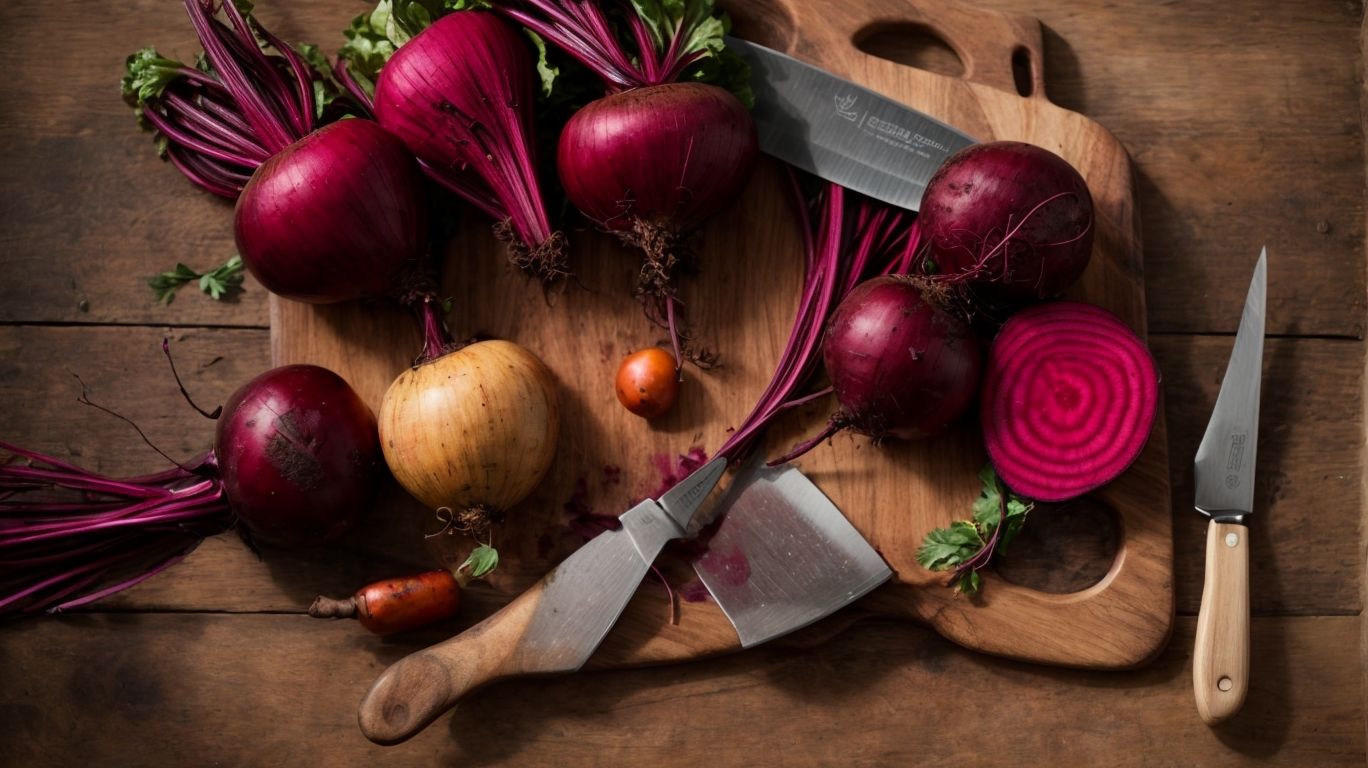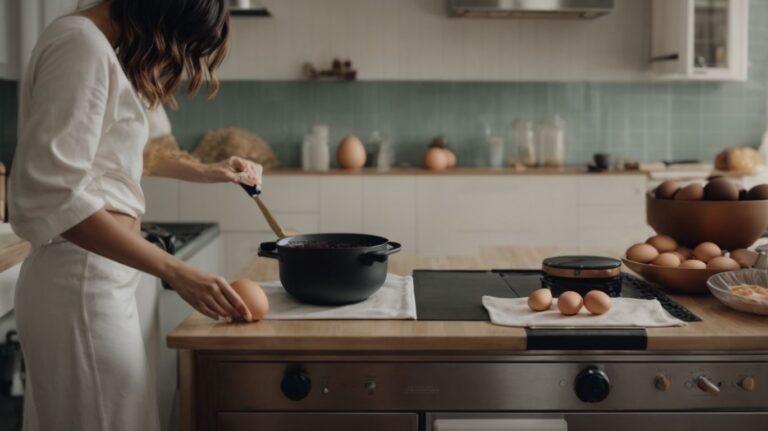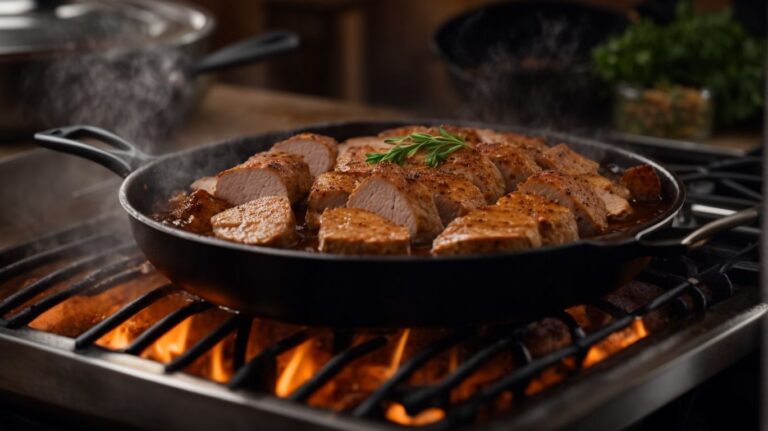How to Cook Beetroot From Fresh?
Looking to elevate your cooking skills and impress your guests with a delicious and nutritious dish?
Explore the process of cooking beetroot from fresh, from the essential ingredients needed to a step-by-step guide on how to prepare and bake the beetroot.
Discover tips and tricks to take your beetroot dish to the next level and stay tuned for a culinary adventure you won’t want to miss!
Key Takeaways:
Why Cook Beetroot From Fresh?
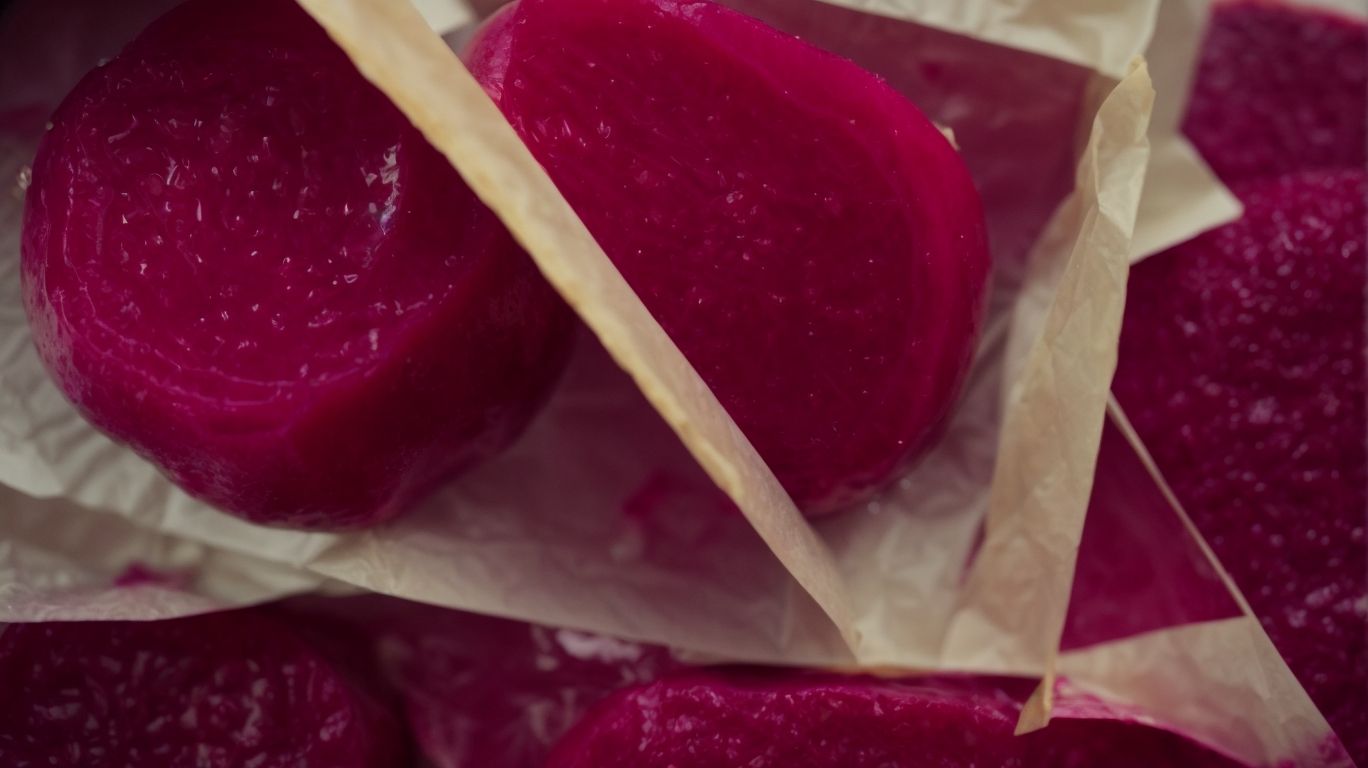
Credits: Poormet.Com – Carl Clark
Cooking beetroot from fresh ensures maximum retention of nutrients, flavors, and textures, offering a healthier and more vibrant culinary experience.
When you cook fresh beetroot, you not only preserve its vibrant color, earthy flavor, and crunchy texture, but also retain essential nutrients like folate, manganese, and vitamin C that are often lost during processing. By incorporating fresh beetroot into your recipes, you can elevate the nutritional value of your dishes while adding a natural sweetness that enhances the overall taste profile.
What You’ll Need to Cook Beetroot From Fresh
To cook beetroot from fresh, gather essential ingredients such as beets, salt, and olive oil, ensuring a simple yet flavorful cooking process.
Begin by selecting firm, medium-sized beets; their freshness will greatly impact the final dish. Salt acts not only as a seasoning but also helps tenderize the roots during the cooking process. The use of high-quality olive oil enhances the earthy sweetness of the beetroot and helps to caramelize the exterior, adding depth of flavor. These ingredients work synergistically to create a dish that is both vibrant in color and rich in taste.
Fresh Beetroot
Fresh beetroot, with its ruby red roots and nutritious beet greens, is a versatile ingredient that offers a myriad of culinary possibilities.
When selecting fresh beetroot, there are a few key factors to keep in mind to ensure you get the best quality produce. Look for beetroots that have vibrant, deep red or purple hues, signaling ripeness and sweetness. The skin should be smooth and firm, without any noticeable blemishes or soft spots.
- Texture: Opt for beetroot that feels heavy for its size and has a crisp texture when fresh, as this indicates moisture content and overall freshness.
- Leaf quality: Don’t overlook the beet greens – they should be robust, vibrant, and free of wilting for an additional indicator of the beetroot’s freshness.
Salt
Salt serves as a fundamental seasoning that enhances the natural flavors of beetroot, adding depth and balance to the overall dish.
When used in beetroot recipes, salt not only brings out the inherent sweetness of the vegetable but also helps to reduce any bitterness present. The salt interacts with the taste receptors on our tongues, amplifying the flavor profile of the dish. It also plays a crucial role in regulating the moisture content of the beetroot, ensuring that it cooks evenly and retains its vibrant color. The presence of salt helps to round out the other spices and ingredients used in the recipe, creating a harmonious blend of flavors that is both satisfying and irresistible.
Olive Oil
Olive oil, with its rich aroma and health benefits, is a preferred choice for roasting beets, imparting a delightful Mediterranean touch to the dish.
In terms of cooking oils, olive oil is highly esteemed for its versatility and ability to enhance flavors without overpowering them. The fruity undertones and slight peppery finish of extra virgin olive oil complement the earthy sweetness of roasted beetroots perfectly. This dynamic pairing elevates the dish to a whole new level, creating a harmonious blend of textures and tastes. Olive oil’s high smoke point makes it ideal for roasting at higher temperatures, ensuring a crispy exterior while locking in the beetroot’s natural juices.
Aluminum Foil
Aluminum foil acts as a versatile tool for roasting beets, facilitating even cooking and sealing in the natural juices and flavors of the root vegetable.
When roasting beets, the use of aluminum foil not only helps in maintaining an ideal cooking temperature but also ensures that the moisture content remains intact, preventing the beets from drying out during the cooking process. By creating a sealed environment, the foil traps the steam released by the beets, infusing the vegetable with its own juices, resulting in a tender and flavorful outcome. The heat retention properties of aluminum foil contribute to an evenly cooked batch of beets, avoiding unevenly cooked pieces that can often occur without proper heat distribution.
Step-by-Step Guide to Cooking Beetroot From Fresh
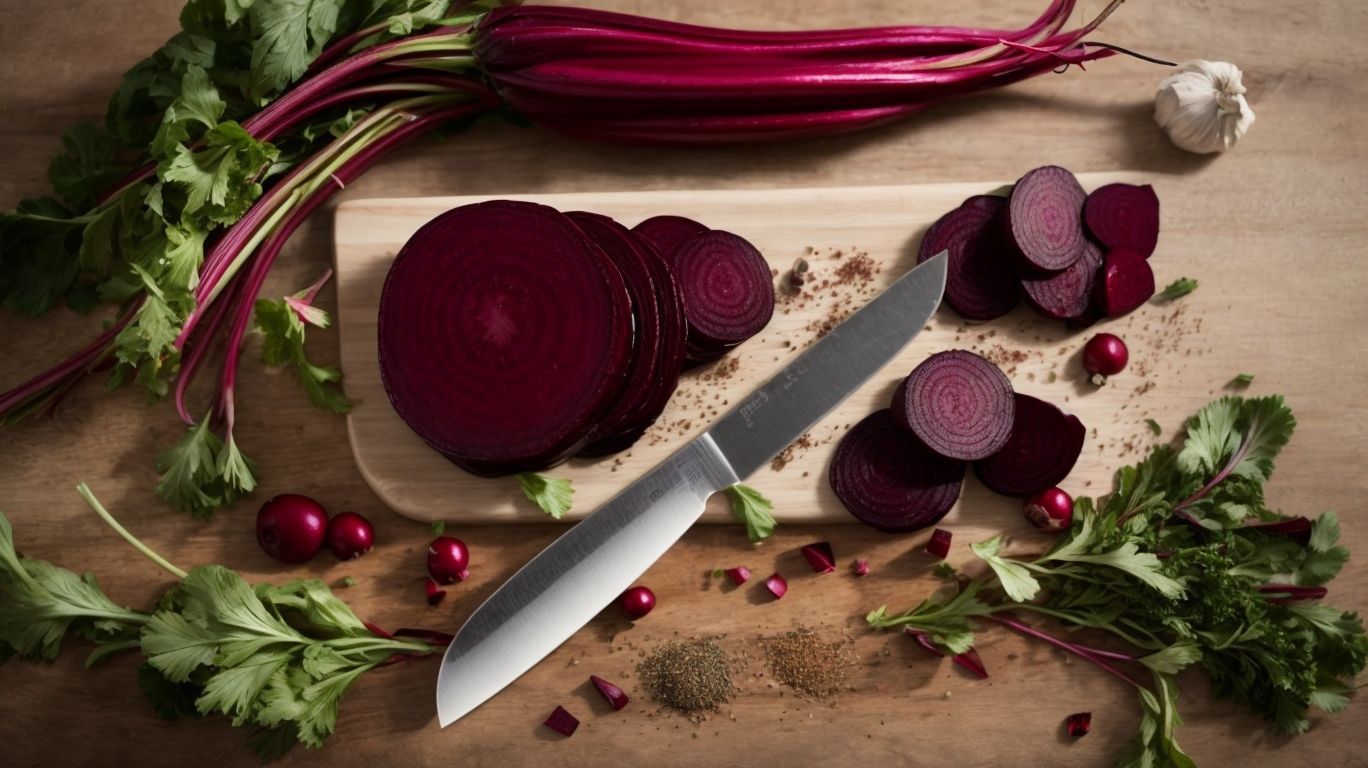
Credits: Poormet.Com – Jacob Young
Master the art of cooking fresh beetroots with this comprehensive step-by-step guide that ensures perfectly roasted and flavorful results.
Begin by thoroughly washing the beetroots under cold running water, removing any dirt and debris.
Next, preheat your oven to 400°F (200°C). While the oven is heating up, trim any greens and root ends from the beetroots, leaving about an inch of the stems attached.
For each beetroot, individually wrap them in aluminum foil after lightly coating with olive oil and a sprinkle of salt and pepper.
Place the wrapped beetroots on a baking sheet and roast them in the oven for approximately 45-60 minutes, or until they are tender when pierced with a fork.
Step 1: Preheat Your Oven
Begin the beetroot roasting process by preheating your oven to the optimal temperature, setting the stage for even and thorough cooking.
When preheating your oven for beetroot roasting, it’s crucial to ensure that it reaches the right temperature to guarantee perfect results. Most recipes recommend preheating the oven to around 400°F (200°C) for roasting beetroot, allowing the heat to evenly penetrate the vegetables.
Before preheating, it’s a good idea to remove any oven racks that might restrict airflow and ensure that the oven is clean to prevent any undesirable flavors transfer. Taking these preliminary steps sets the foundation for a successful and flavorful roasting process.
Step 2: Prepare the Beetroot
Prepare the fresh beetroot by washing, peeling, and trimming it to ensure a clean and uniform appearance before cooking.
Start by gently rinsing the beetroot under cool running water to remove any dirt or debris. Use a vegetable brush to scrub the skin, especially if you are planning to keep the skin on. Next, take a sharp knife or vegetable peeler to remove the outer skin of the beetroot. Be cautious as the beetroot can stain hands and countertops.
After peeling, cut off the leafy tops and the tail of the root. For cooking purposes, you can slice or dice the beetroot according to your recipe requirements. Remember to handle beetroot carefully to avoid staining surfaces and clothes.
Step 3: Season and Wrap the Beetroot
Enhance the flavors of fresh beetroot by seasoning it with aromatic spices and herbs, then wrapping it in foil to seal in the delicious essences during roasting.
Seasoning the beetroot before roasting is crucial as it not only adds depth of flavor but also helps to tenderize and enhance the natural sweetness of the vegetable. Common spices like cumin, paprika, and thyme work wonderfully with beetroot, while fresh herbs such as rosemary or dill can elevate the dish with their fragrant notes. The wrapping in foil method not only locks in moisture and flavor, but also promotes even cooking, ensuring that the beetroot is perfectly tender and flavorful throughout.
Step 4: Bake the Beetroot
Place the seasoned beetroot in the oven and bake it to perfection, allowing the flavors to meld and intensify while the root vegetable reaches optimal tenderness.
When baking beetroot, it’s crucial to maintain a moderate oven temperature, typically around 375°F, to ensure the outer layers caramelize without burning, while the inner flesh turns tender.
Depending on the size of the beets, the roasting process can take anywhere from 45 minutes to 1 hour, but the key is to check for doneness using a fork – the beet should yield to gentle pressure, indicating it’s perfectly cooked.
During baking, the natural sugars in the beet will start to caramelize, creating a sweet and earthy aroma that fills the kitchen, signaling that the vegetable is on its way to being deliciously roasted.
Step 5: Check for Doneness
Verify the readiness of the roasted beetroot by testing its tenderness with a fork or knife, ensuring that it is cooked to the desired level of softness and flavor development.
To achieve the perfect doneness, aim for a beetroot that is tender yet retains a slight firmness for a satisfying bite. When piercing the beetroot with a fork, it should offer minimal resistance while still holding its shape. The flavors should have intensified during the roasting process, resulting in a sweet and earthy taste. Remember, overcooked beetroots can turn mushy and lose their distinct flavor profile, so focus on achieving that ideal balance between softness and flavor richness.
Tips and Tricks for Cooking Beetroot From Fresh
Elevate your beetroot cooking skills with these expert tips and creative tricks that enhance the flavors, textures, and culinary appeal of this nutritious root vegetable.
One essential aspect of improving your beetroot dishes is to properly season them to bring out their natural sweetness and earthy undertones. Consider using a combination of:
- fresh herbs like thyme or rosemary
- bold spices such as cumin or smoked paprika
to add depth of flavor. Additionally, marinating sliced beetroots in a mixture of olive oil, vinegar, and garlic before roasting can intensify their taste.
In terms of preparation, experiment with various cuts and sizes to achieve different textures. Slicing beetroots thinly for crisps, dicing them for salads, or roasting them whole for a rich, tender dish offers diverse culinary experiences. Roasting beetroot is a popular cooking method that intensifies their sweetness. Try wrapping them individually in foil with a sprinkle of sea salt and a drizzle of honey before baking to enhance their natural sugars.
Use Different Seasonings
Experiment with various seasonings and flavor profiles to discover exciting combinations that elevate the taste of cooked beetroots, adding a delightful twist to your culinary creations.
In terms of seasoning beetroot, the options are truly endless. From traditional spices like cumin and coriander to more exotic choices such as za’atar or garam masala, each spice brings its own unique touch.
Pairing these spices with contrasting flavors like citrusy lemon or tangy balsamic vinegar can create a harmonious balance that enhances the natural sweetness of the beetroot.
- Try roasting beetroot with a sprinkle of smoked paprika for a smokey undertone.
- For a hint of freshness, toss your beets in chopped fresh herbs like parsley or dill before baking.
- Don’t forget to experiment with different textures – a crunchy topping of nuts or seeds can add an interesting dimension to your dish.
Add Other Vegetables
Enhance the nutritional value and visual appeal of beetroot dishes by incorporating complementary vegetables that add a spectrum of colors, textures, and flavors to your culinary creations.
For a vibrant and balanced dish, consider pairing roasted beetroots with crunchy carrot sticks, sweet bell peppers, and earthy mushrooms. The mix of these vegetables not only makes your plate visually stunning with pops of red, orange, and brown but also creates a harmonious blend of tastes. Roasting these vegetables together intensifies their natural sugars, bringing out a caramelized essence that enhances the overall flavor profile.
Cook on the Grill
Explore the unique smoky flavors and charred textures that grilling imparts on beetroot, transforming this humble root vegetable into a succulent and enticing grilled delicacy.
Grilling beetroot not only enhances its natural sweetness but also adds a depth of flavor that cannot be achieved through other cooking methods. The process of grilling caramelizes the sugars in the beetroot, creating a delightful contrast of sweetness and smokiness. Grilled beetroot makes a versatile addition to salads, sandwiches, or even enjoyed on its own as a tasty side dish perfect for a summer barbecue. To successfully grill beetroot, it’s essential to first coat the slices with a drizzle of olive oil and season with salt and pepper to bring out their best flavors.
Conclusion
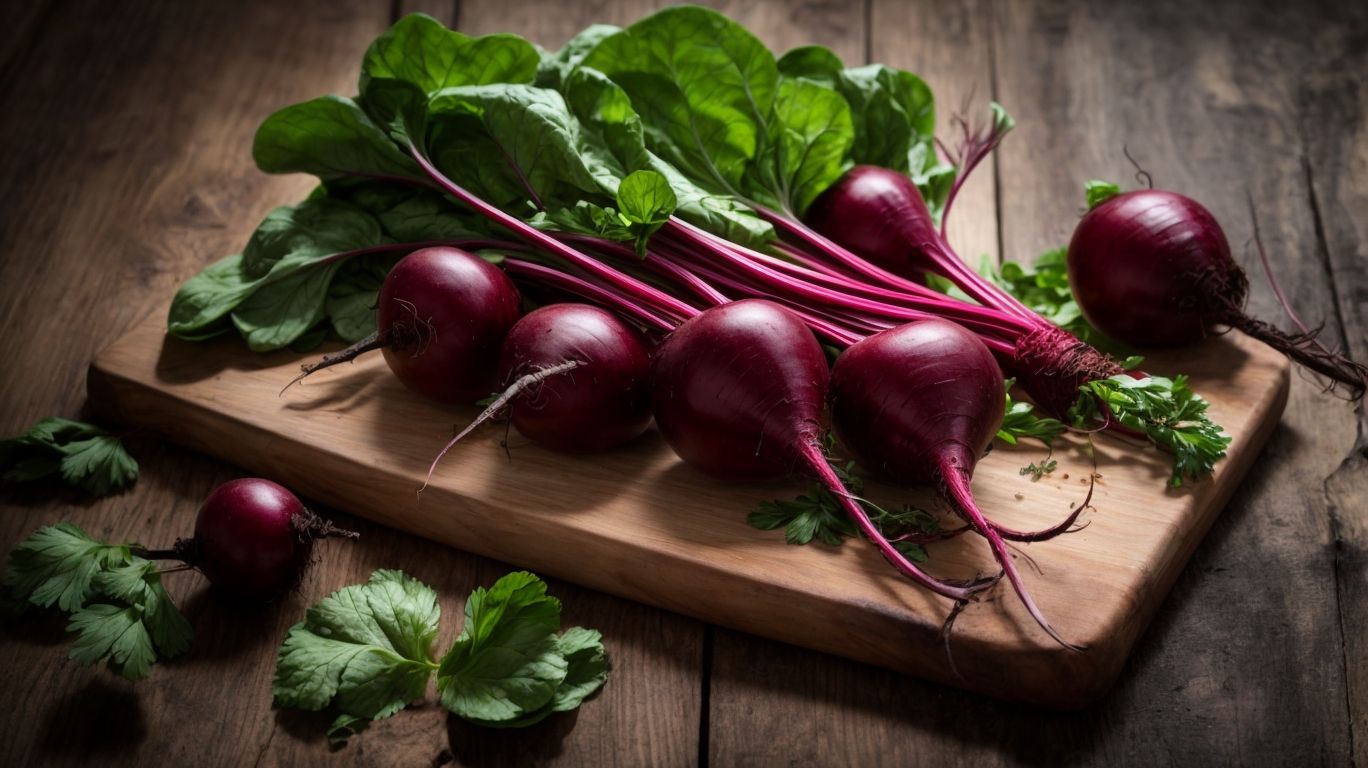
Credits: Poormet.Com – Jason Green
Cooking beetroot from fresh not only preserves its nutritional integrity but also unlocks a world of flavors and culinary possibilities that cater to both health-conscious individuals and gastronomy enthusiasts.
One of the key advantages of cooking fresh beetroot is the retention of its essential nutrients such as folate, potassium, and fiber, which are essential for maintaining overall health.
Fresh beetroot offers a wide array of culinary possibilities, from vibrant salads to tasty soups and even delicious beetroot hummus, allowing for versatility in meal preparation.
The dietary appeal of fresh beetroot lies in its ability to add vibrant color, unique earthy flavor, and a nutrient boost to various dishes, making it a popular choice for health-conscious cooks and food enthusiasts alike.
Frequently Asked Questions
How to Cook Beetroot From Fresh?
What is the best method for cooking beetroot from fresh?
The best method for cooking beetroot from fresh is roasting it in the oven. This brings out the natural sweetness and enhances the flavor.
How to Cook Beetroot From Fresh?
Can I use a pressure cooker to cook beetroot from fresh?
Yes, you can use a pressure cooker to cook beetroot from fresh. It will reduce the cooking time significantly, but the texture and flavor may be slightly different from roasting or boiling.
How to Cook Beetroot From Fresh?
Is it necessary to peel the beetroot before cooking?
Yes, it is necessary to peel the beetroot before cooking. The skin is tough and can alter the texture of the dish. Plus, it’s easier to peel after cooking.
How to Cook Beetroot From Fresh?
How long does it take to cook beetroot from fresh?
It takes approximately 45 minutes to 1 hour to cook beetroot from fresh. This may vary depending on the size and freshness of the beetroot.
How to Cook Beetroot From Fresh?
Can I cook beetroot from fresh without boiling or roasting?
Yes, you can cook beetroot from fresh in a microwave. Simply wrap the beetroot in a damp paper towel and microwave for 5-6 minutes until tender.
How to Cook Beetroot From Fresh?
What are some creative ways to cook beetroot from fresh?
Aside from roasting and boiling, you can also grill, pickle, or even make a beetroot puree. Experiment with different methods to find your favorite way to cook beetroot from fresh.

